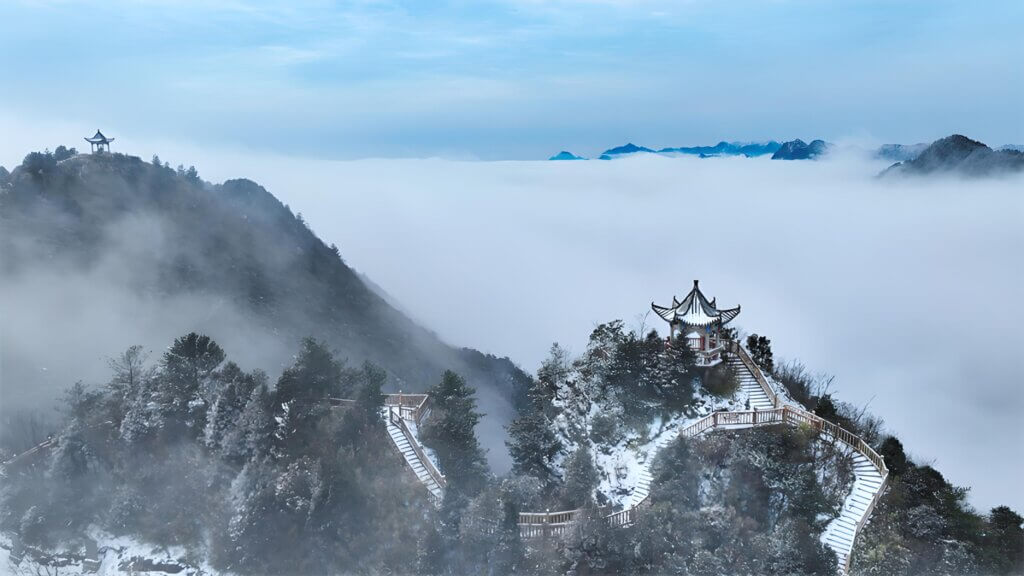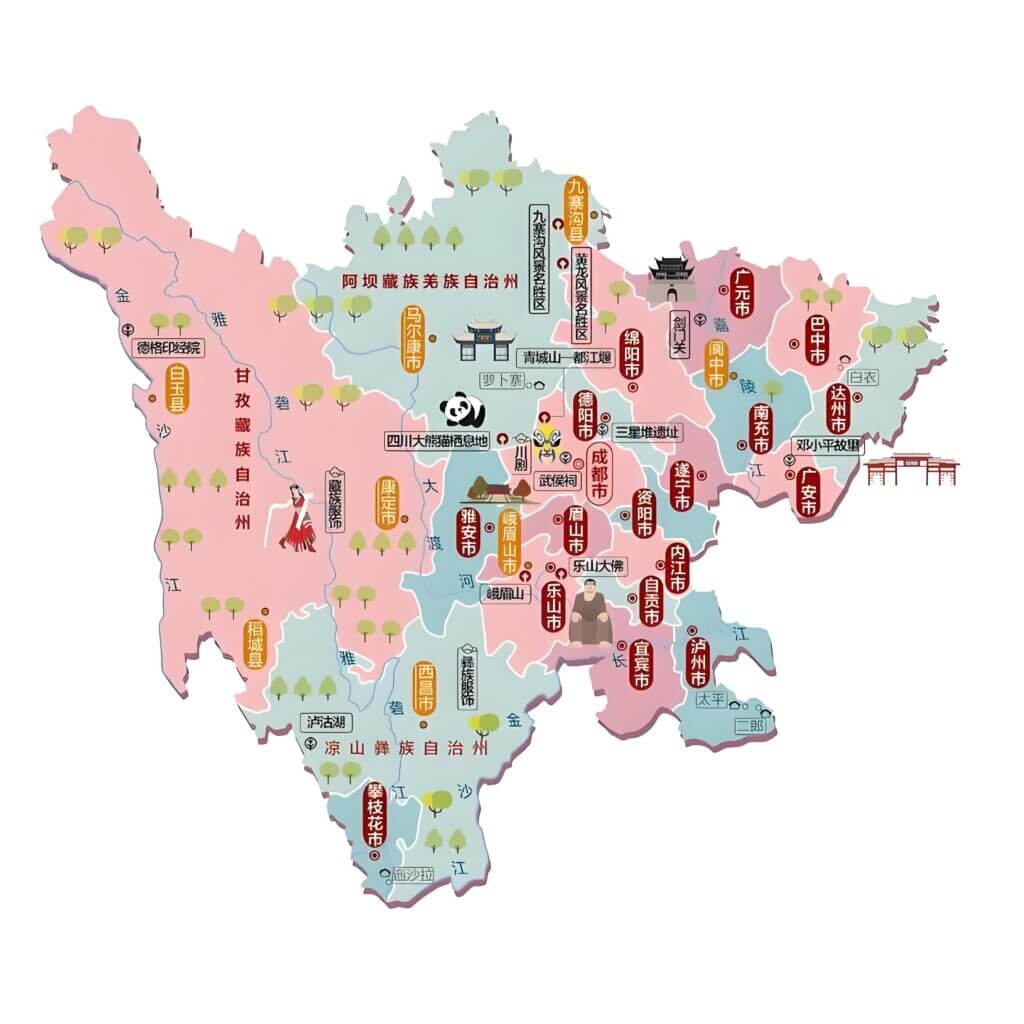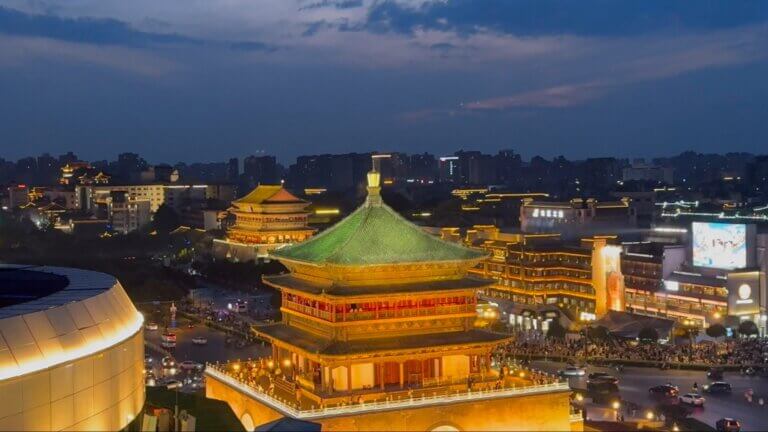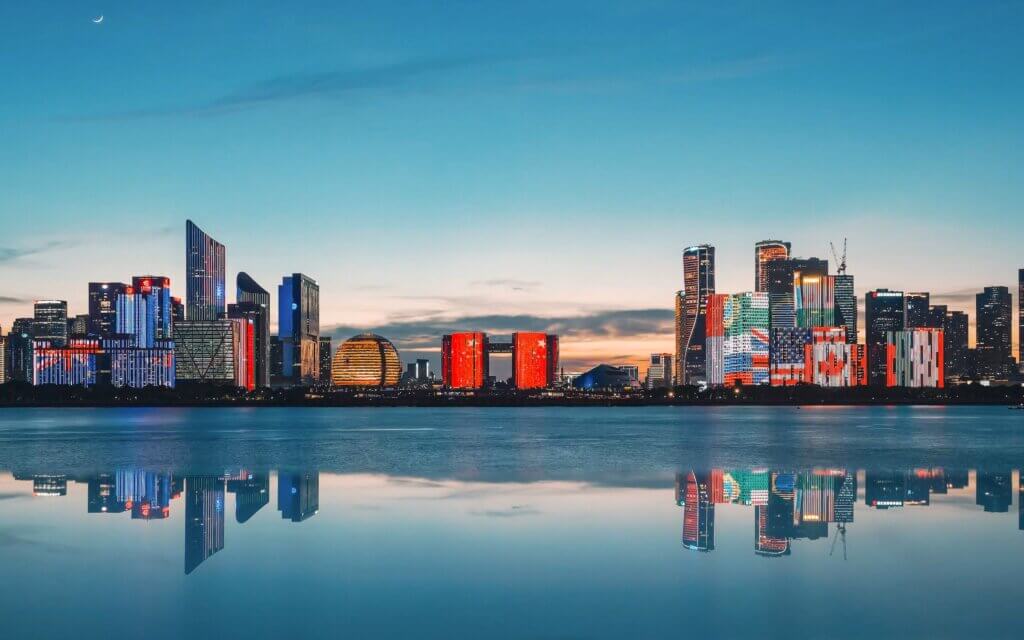
Sichuan 6-Day Tour: A Journey Through Culture, Scenery, and Flavor
Sichuan, a province in southwestern China, is a land of contrasts. From bustling cities to serene landscapes, Sichuan offers a rich tapestry of experiences. This 6-day tour will take you through the heart of Sichuan, showcasing its unique culture, breathtaking scenery, and mouth-watering cuisine.
Day 1: Arrival in Chengdu
Your adventure begins in Chengdu, the capital of Sichuan. Known for its relaxed pace of life and spicy cuisine, Chengdu is a city that seamlessly blends modernity with tradition. Upon arrival, check into your hotel and take some time to explore the city. Visit the Wuhou Shrine, a tribute to the Three Kingdoms period, and stroll through Jinli Ancient Street, where you can sample local snacks and shop for souvenirs.
Weather Tip: Chengdu has a humid subtropical climate. Summers are hot and humid, while winters are mild. Spring and autumn are the best times to visit.
Day 2: Chengdu – Leshan – Emei Shan
On day two, head to Leshan to see the Giant Buddha, a UNESCO World Heritage Site. Carved into a cliff face, this 71-meter tall statue is the largest stone Buddha in the world. Afterward, travel to Emei Shan, one of China’s four sacred Buddhist mountains. Spend the night at the base of the mountain to prepare for an early start the next day.
Transportation Tip: Buses and trains connect Chengdu with Leshan and Emei Shan. A one-way bus ticket costs around $10.
Day 3: Emei Shan
Rise early to hike Emei Shan. The mountain offers various trails, ranging from easy walks to challenging climbs. Along the way, you’ll encounter temples, monasteries, and stunning natural scenery. If hiking isn’t your thing, you can take a cable car to the summit. After a day of exploration, return to Chengdu in the evening.
Cost Tip: The entrance fee to Emei Shan is approximately 20,andthecablecarridecostsaround20,andthecablecarridecostsaround15.
Day 4: Chengdu – Jiuzhaigou
Fly to Jiuzhaigou, a valley renowned for its colorful lakes, waterfalls, and snow-capped peaks. Spend the day exploring Jiuzhaigou Valley National Park, a UNESCO World Heritage Site. The park’s pristine beauty is a photographer’s dream, with turquoise lakes and lush forests at every turn.
Weather Tip: Jiuzhaigou has a cool, temperate climate. Summers are mild, while winters can be quite cold. The best time to visit is during autumn when the foliage is at its most vibrant.
Day 5: Jiuzhaigou – Huanglong
Travel to Huanglong, another stunning natural reserve known for its travertine pools and limestone formations. The Huanglong Scenic Area is a UNESCO World Heritage Site and offers breathtaking views of cascading pools and vibrant landscapes. After a day of exploration, return to Jiuzhaigou for the night.
Transportation Tip: Buses run regularly between Jiuzhaigou and Huanglong. A one-way ticket costs around $10.
Day 6: Jiuzhaigou – Chengdu
On your final day, fly back to Chengdu. Spend your last hours in Sichuan exploring the city’s vibrant food scene. Visit a local hotpot restaurant to experience the fiery flavors of Sichuan cuisine. Don’t forget to try mapo tofu, kung pao chicken, and dan dan noodles. Afterward, head to the airport for your departure.
Cost Tip: A meal at a mid-range restaurant in Chengdu costs around 10−10−15 per person.
Accommodation Suggestions
- Chengdu: The BuddhaZen Hotel offers a blend of traditional and modern comforts, with prices starting at $50 per night.
- Emei Shan: The Emei Shan Hotel provides comfortable accommodations near the mountain, with rates starting at $40 per night.
- Jiuzhaigou: The Jiuzhaigou International Hotel offers stunning views and luxurious amenities, with prices starting at $80 per night.
Best Time to Visit Sichuan
The best time to visit Sichuan is during spring (March to May) and autumn (September to November). During these seasons, the weather is pleasant, and the natural scenery is at its most beautiful. Summers can be hot and humid, while winters are cold, especially in mountainous areas like Jiuzhaigou and Huanglong.
Other Tips
- Language: While Mandarin is the official language, many locals speak Sichuanese. Learning a few basic phrases can enhance your travel experience.
- Currency: The local currency is the Chinese Yuan (CNY). Credit cards are widely accepted in cities, but it’s advisable to carry cash in rural areas.
- Health: Sichuan cuisine is known for its spiciness. If you’re not accustomed to spicy food, start with milder dishes and gradually increase the heat level.

Conclusion
A 6-day tour of Sichuan offers a perfect blend of cultural exploration, natural beauty, and culinary delights. From the bustling streets of Chengdu to the serene landscapes of Jiuzhaigou and Huanglong, this journey will leave you with unforgettable memories. Plan your trip during the optimal seasons, and don’t forget to indulge in the local cuisine. Sichuan is a destination that promises to captivate and inspire.



